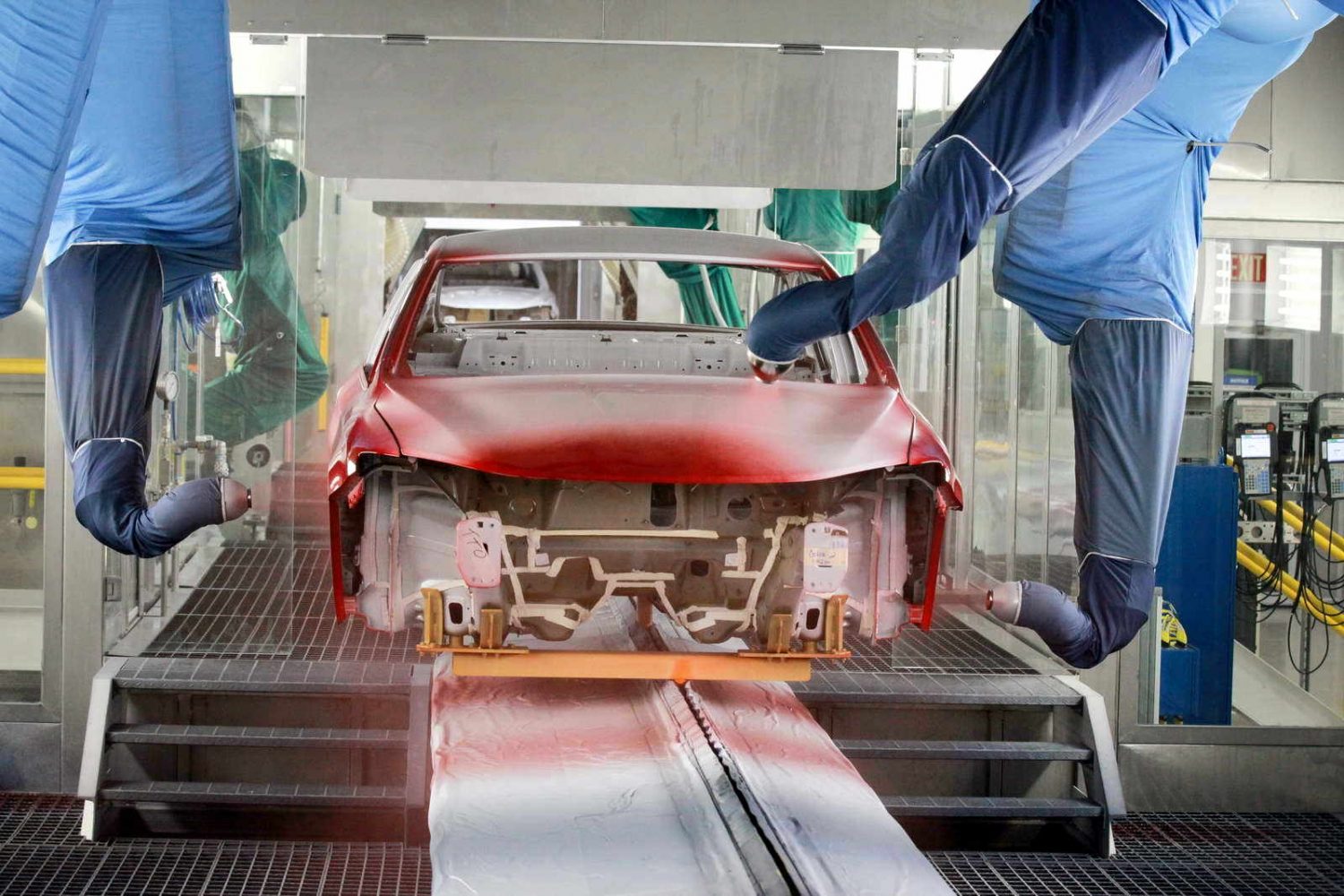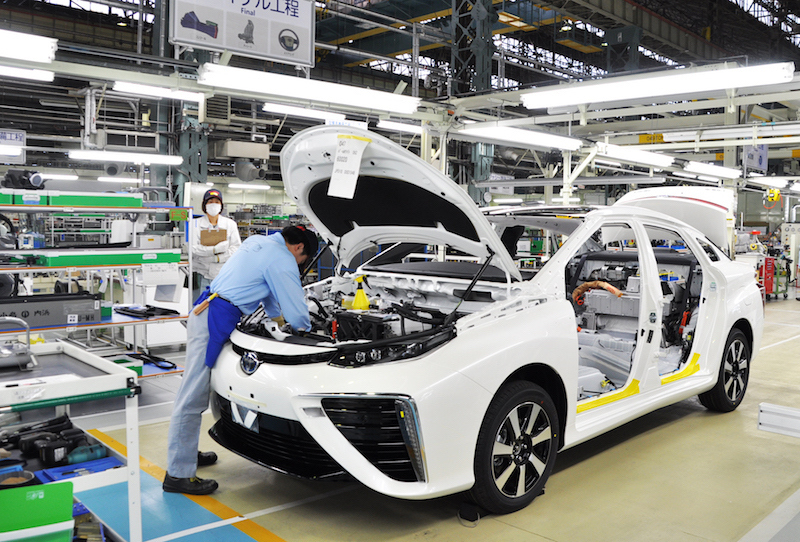Company Shares Update at Sonoma Event
As one of the top three global automakers, Toyota knows that it is essential to set the tone and agenda for addressing the environmental issues facing all manufacturers in the 21st century. Starting in 2015 the company created a set of challenges for itself that go beyond just minimizing their company’s global environmental impact, and aspire to set goals that allow the company to build a net positive change to the global environment.

Toyota recently hosted a summit in Sonoma California in conjunction with the Shell Eco-Challenge to provide an update on its North American efforts in four key areas:
- Reducing Toyota’s total carbon footprint of its products and operations by 90 percent of a 2010 baseline by 2050.
- Coexisting with and improving Toyota’s biodiversity impact on the ecosystem.
- Implementing strategies to conserve the natural resources used in their products, eliminating waste disposal, and freely sharing those strategies.
- Developing closed-loop manufacturing systems to minimize water use and adopt water conservation and recycling techniques that by 2050 will recycle and reuse 100 percent of water used.
“At Toyota, we are working hard to address environmental issues facing the global community,” said Kevin Butt, regional environmental director, Toyota Motor North America (TMNA).
Clean Fleet Report was on hand at this summit and here is what we found that Toyota in North America was currently doing to meet their 2050 goals.
Reducing Toyota’s Total Carbon Footprint
As with any manufacturer of transportation products, the most important goal is to reduce the CO2 footprint of the product. In this area, Toyota had an early lead with the release of Hybrid Synergy Drive System. Today, Toyota offers hybrid power plants in just about every passenger vehicle that it offers. The company goal moving forward is to build on this inertia with a whole range of new vehicles that provide a variety of CO2 reductions:
- Increasing the efficiency of conventional gasoline vehicles,
- Concentrating on developing a range of electrified powertrains from mild and plug-in hybrids to those powered by hydrogen and batteries.
Toyota plans to support work by providing infrastructure for these alternative fueled vehicles as well.

According to Toyota, an excellent opportunity for CO2 reduction lies in the manufacturing process of its products—at the factory floor and with the materials sourced from suppliers, as well as creative ideas for the end of life recycling. Toyota is moving forward rapidly to improve its manufacturing technologies, including how they power their manufacturing processes. As with other major manufacturers, Toyota continues to increase fueling their plants with renewable energy sources such as solar, wind, and hydrogen.
To showcase its carbon footprint approach, Toyota has created a demonstration named “Project Portal” at the Port of Los Angeles, where they have built a short-haul (drayage) delivery truck that is powered by two fuel cells from a Mirai hydrogen powered sedan. The hydrogen used in the truck comes from a prototype energy generation plant also known as a “Tri-Gen” that uses agricultural waste as its feedstock and turns it into the hydrogen to power the truck, electricity to power Toyota’s logistics operations at the port and clean water.
Coexisting with Biodiversity and Minimizing Impacts on the Ecosystem
Toyota places great emphasis on biodiversity, not only at its manufacturing and operations facilities, but also with suppliers so that they manage their operations in harmony with nature.
At its truck manufacturing plant in San Antonio, Texas, Toyota has partnered with the local zoo and the Texas Department of Parks and Wildlife to plant “Pollinator” gardens at local schools in the region and the plant’s visitors center to attract pollinators such as bees, butterflies, hummingbirds and other animals.
“We want people to know that planting just one plant that pollinators enjoy helps,” said Rob Franklin, environmental director, at Toyota’s San Antonio facility. “This garden is part of our commitment to protecting biodiversity and supporting local species, here in Texas and at our facilities across North America.”
Toyota owns more than 21,000 acres of land across 15 manufacturing plants in the U.S., Canada, and Mexico, of which 12 have already earned a Conservation Certification award from the Wildlife Habitat Council.
Minimizing Materials Waste and Maximizing Recycling
Toyota has committed to look for ways to minimize waste, keep the materials used for its products circulating and out of landfills. They have set an ambitious goal for the use of sustainable materials that are renewable, recycled or are recyclable. Toyota has committed extending the life of vehicle parts such as batteries to reduce the environmental footprint of its cars and trucks.

Eliminating waste is Toyota’s further commitment. It reduces waste at the source in manufacturing, reusing materials and recycling. By keeping materials in circulation, demand for natural resources is reduced and it works to prevent waste from being disposed of in landfills or by incineration. The techniques that Toyota develops will be shared with any and all stakeholders. The aim is to reduce waste by engagement with the communities that Toyota is part of, including local and state governments, suppliers and the Toyota dealer base.
Water Conservation and Stewardship
Toyota emphasized that clean water is the most important environmental issue and one of the most at-risk commodities today, especially in drought-stressed regions of the world. Doug Murtha, vice president of strategic planning at TMNA, said, “Our goal is to become a zero impact user of water at all of our manufacturing and support facilities.” Toyota has been working on this goal for several years, and has already cut its water usage by using recycled water for all non-potable uses, and continues to reduce fresh water usage in its automobile manufacturing through increased efficiencies. Its ongoing goal is to increase the recycling of water so that they have to withdraw less clean water.
In addition, Toyota has committed to a 100 percent protection of natural water resources by ensuring that any wastewater discharged back to the ecosystem meets the highest cleanliness standards. Toyota’s eventual goal is to use water only in closed loop systems that have zero discharge and zero withdrawal from the local environment. As with sharing their knowledge waste minimization, Toyota continues to work with its partners, suppliers and local communities to maximize water conservation.
Toyota’s four-pronged environmental plan and the company’s willingness to report on progress are a good sign for the auto industry and the environment.

1 thought on “Event: Toyota Doubles Down on Commitment To Environmentally Sustainable Future”